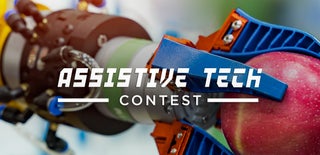Introduction: Glass-Lights!
Need help seeing in the dark? This is a simple but useful gadget for those that may need some more light both throughout the day and at night. Whether it’s reading a book at 11:00 p.m. without distracting your family, or finding your way around the dark in the middle of the night that you need, glass-lights could help you! They are removable, small, lightweight and long-lasting lights that can be added to any pair of glasses, and it’s so easy to make them. Here’s what you need;
Supplies
Materials:
- Electrical Tape
- Hot Glue Sticks
- LED, 3 Coin Cell Batteries, and an on/off switch OR a small table light
- Wrap-It (or any other type of Velcro)
- Double Sided Foam Tape
Tools:
- Saw/Rotary Tool
- Scissor/Box Cutter
- Hot Glue Gun
- Pliers
- Electrical Tape
- Hot Glue Sticks
- LED, 3 Coin Cell Batteries, and an on/off switch OR a small table light
- Wrap-It (or any other type of Velcro)
- Double Sided Foam Tape
Tools:
- Saw/Rotary Tool
- Scissor/Box Cutter
- Hot Glue Gun
- Pliers
Step 1: Step 1: Find and Secure All Electronics
First, we need to open the small table light and see the circuit inside. I used a small one from dollar tree, as you can see in the picture, but all small lights (that use coin cell batteries) should have the same circuit inside. Of course, if you are using your own LED, coin cell batteries, and on/off switch, you don’t need to worry about this. Here’s how to do the first step:
If you are using a small table light, like me;
- Open it up, see the components, and cut off any unnecessary plastic that takes up space using your saw or rotary tool. This should leave you with a smaller piece that still works, as you can see in the pictures.
If you’re using your own components;
- You’ll first need to lay them out in the order seen in the pictures, and test to make sure your circuit works (if the LED turns on when you turn on the switch, it works👍). Next, you need to make some type of a “shell” that can house your circuit. Try to make it look like the one in the pictures. You can either 3D print it, make it out of wood, aluminum, or even thick paper!
If you are using a small table light, like me;
- Open it up, see the components, and cut off any unnecessary plastic that takes up space using your saw or rotary tool. This should leave you with a smaller piece that still works, as you can see in the pictures.
If you’re using your own components;
- You’ll first need to lay them out in the order seen in the pictures, and test to make sure your circuit works (if the LED turns on when you turn on the switch, it works👍). Next, you need to make some type of a “shell” that can house your circuit. Try to make it look like the one in the pictures. You can either 3D print it, make it out of wood, aluminum, or even thick paper!
Step 2: Step 2: Tape and Glue Down All Components
Now, we need to make sure that the circuit is able to stay put when you pick it up, shake it, and throw it around. Don’t do that just yet! First, get some tape (electrical, masking, or heat resistant, I used all three😂), and tape down the batteries in the position as shown in the pictures. Next, take your hot glue gun and glue sticks, and glue down the LED’s cover and the LED in spot, as shown in the pictures. Third, cut out a piece of thin cardboard or plastic in the shape of the front of the shell. After all these steps, your light should look like the one in the last picture.
Step 3: Step 3: Attaching to Glasses
Since the lights are now done, we need a way to attach them to your glasses. For this, you will need Wrap-It or some other type of Velcro. Remember that piece of thin cardboard or plastic you cut in the last step and hot glued on to the light? Now cut out a piece of Velcro, as seen in the picture, and hot glue it on top of the part of the light you glued that cardboard/plastic piece from the last step, as seen in the pictures. After this, cut out a thinner part of Velcro and attach it to your glasses using double sided foam tape. If you will be permanently using the lights on the same glasses, you can use hot glue to do this, but if you want some more movement to the glasses and will be switching the lights around, use double sided tape. After you’re done with this step, repeat everything over to make a second light!
Attachments
Step 4: Step 4: Test and See the Magic!
You’re done! The final product should look at least somewhat like the ones in the pictures above. Enjoy your new glass-lights!
Step 5: Thanks to Tinkercad
One more thing: When working on project like these, it’s important to design the steps and the final product (circuits as well if it involves electronics) on a computer software. I used Tinkercad for this project. In the attached images, you can see the steps I’ve taken in designing the glass-lights in Tinkercad.

Participated in the
Assistive Tech Contest










